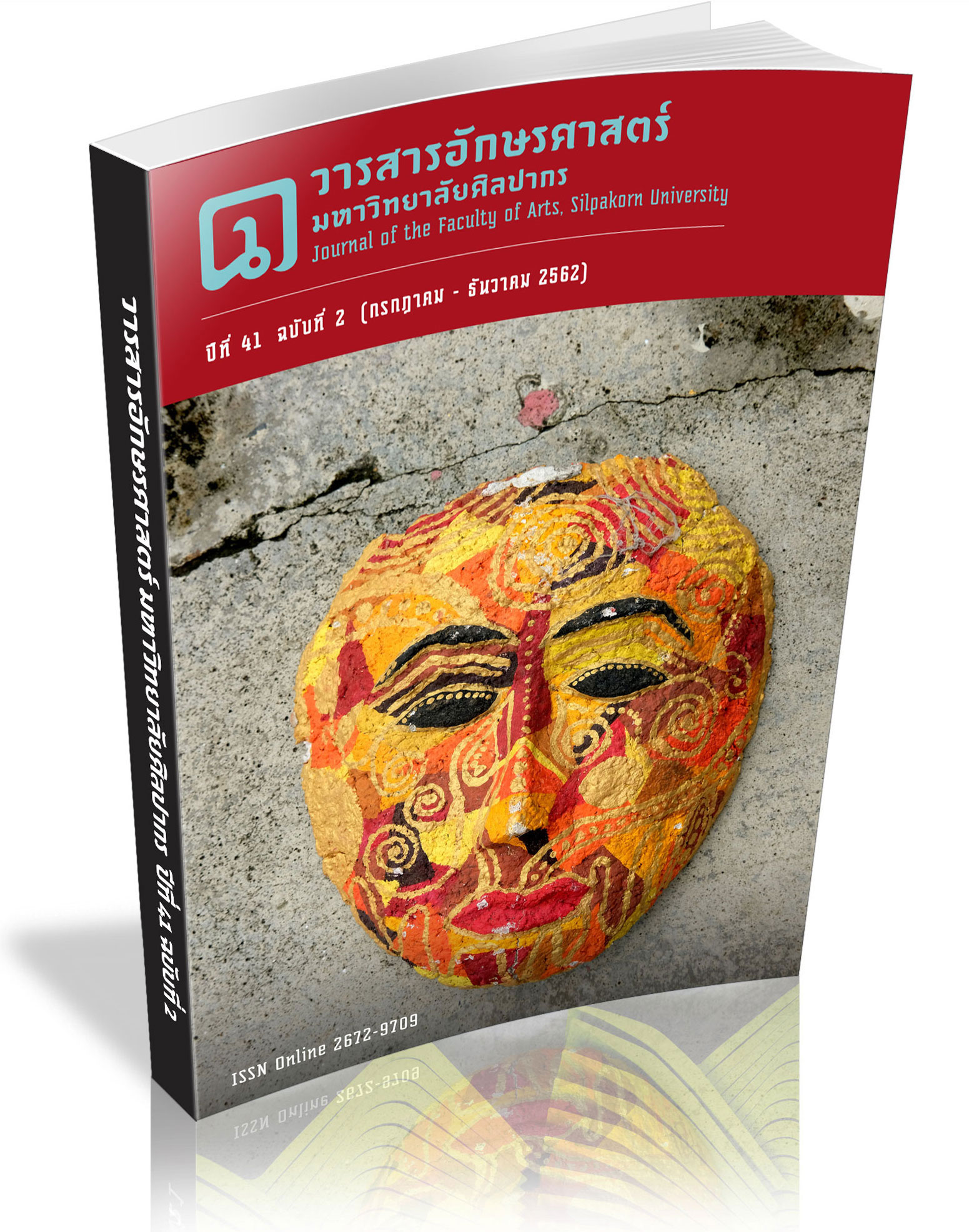The Relationship between Linguistic Strategies and the Representation of Chinese Tourists at WWW.PANTIP.COM
A Critical Discourse Analysis Study
Keywords:
Representations, Linguistic Strategies, Chinese Tourist, www.pantip.com, Critical Discourse AnalysisAbstract
This research article focused on analyzing the relationships between linguistic strategies and the representation of the Chinese tourists at WWW.PANTIP.COM, using framework Fairclough’s Critical Discourse Analysis (1989). A sample of 350 comments was collected from 1st January - 30th April, 2009 from Pantip’s webboard. The results showed that Pantip community members conveyed sets of ideas about Chinese tourists and the both with positive and negative meanings using similar and different linguistic strategies. There were eight linguistic strategies encoding positive representation, portraying that Chinese tourists are good customers and create business opportunities for Thai people. Chinese tourists are a group of people who desire to the exposed to Thai arts and culture, they are thus considered quality people. On the other hand, there were 12 linguistic strategies encoding negative representation. They represent that Chinese tourists are a group of poor quality tourists, and those that, Thai people do not want to interact with. These representations were created by the members of WWW.PANTIP.COM who have the power to create the sets of idea and select some of the outstanding aspects of Chinese tourists. However, based on the analyses in social and cultural contexts, it was found that the sets of ideas of the in- group and out-group and the belief that the income generated by Chinese tourists is the main source of income of Thai people and has influenced the creation of such representations.
Downloads
References
Chansakul, A. (2018). Overtourism : Effect and Management for Sustainability. Retrieved from https://www.bot.or.th/Thai/MonetaryPolicy/Southern/ReasearchPaper/Overtourism.pdf. (In Thai)
Charoensin-o-larn, C. (2008). A Critical Political Science. 3th ed. Bangkok : Thammasart University Press, Thailand. (In Thai)
Hongladarom, K. & Chauksuvanit, C. (2008). Pragmatics. Bangkok: Faculty of Arts, Chulalongkorn University, Thailand. (In Thai)
Fairclough, N. (1989). Language and Power. London: Longman.
Hall, S. (1997). Representation: Cultural Representations and Signifying Practice. London: SAGE Halliday and Matthiessen. (2004). An Introduction to Functional Grammar. 3th ed. London: Edward Arnold.
Hymes, D. (1974). Foundation of Sociolinguistics: An Ethnographic Approach. Philadelphia: University of Pennsylvania Press.
Kaewphat, S. (2016). The Relationship between Language and Representations of Isan People in National and Local Newspapers: A Critical Discourse Analysis. Doctoral Dissertation, Thai Language, Chulalongkorn University, Thailand. (In Thai)
Kapook.com. (2015). Chalermchai, with a sign to prohibit Chinese tours to Rong Khun Temple After creating a golden glow at the golden toilet. Retrieved from https://travel.kapook.com/view111684.html. (In Thai).
Kavilanan, S. (2018). The Ideology of Investors in the Stock Exchange Business Discourse: A Critical Discourse Analysis Study. Doctoral Dissertation, Thai Language, Kasetsart University, Thailand. (In Thai)
Kövecses, Z. (2002). METAPHOR: A Practical Introduction. New York: Oxford University Press.
Kshemasanta, P. (2017). Unmasking Sock Puppetry in Pantip’s Online Community. Master Thesis, Communication Arts, Chulalongkorn University, Thailand. (In Thai)
Lakoff & Johnson. (1980). Metaphors We Live By. Chicago & London: The University of Chicago Press.
Luangaram, P. & Sethapramote, Y. (2018). Economic impacts of Political Uncertainly in Thailand. Retrieved 2 June 2019, https://www.pier.or.th/wp-content/uploads/2018/05/pier_dp_086.pdf. (In Thai)
Ministry of Tourism and Sports. (2019). International Tourist Arrivals to Thailand 2018. Retrieved from https://www.mots.go.th/more_news.php?cid=502&filename=index
Panpothong, N. (2013). Critical Discourse Analysis based on linguistics. Bangkok: Faculty of Arts, Chulalongkorn University, Thailand. (In Thai)
Phakdeephasook, S. (2018). The Relationship between Linguistic Devices and Identity, and the Approach of Thai Language Study. Bangkok : Chulalongkorn University Press, Thailand. (In Thai)
Royal Society. (2013). Royal Institute Dictionary. Royal Society of Thailand version. 2nd ed. Bangkok : Nanmeebooks, Thailand. (In Thai)
Suriya, T. (2011). The Relationship between Language and Representations of Death-Row Inmates and Executions in Thai Newspaper. Master Thesis, Thai Language, Chulalongkorn University, Thailand. (In Thai)
Suriya, T. (2017). The Relationship between Linguistic Device and Representations of Rohingyas in Thai Online Media: A Critical Discourse Analysis. Doctoral Dissertation, Thai Language, Chulalongkorn University, Thailand. (In Thai)
Thana, P. (2017). Manner Formation of Thai Society. Master Thesis, Political Economy, Chulalongkorn University, Thailand. (In Thai)
Thandee, D. (n.d.). Chinese Threat: Myth or Reality. Retrieved from http://www3.ru.ac.th/korea/korean_wave_th/kwave18.pdf. (In Thai)
Thawornrapasawat, P. (2018). Zero-Dollar Tour: Problem in Thailand Tourism. Retrieved from https://library2.parliament.go.th/ebook/content-issue/2561/hi2561-078.pdf. (In Thai)
The House of Representatives. (2017). China and Being The Great Power in 21st Century. Retrieved from https://library2.parliament.go.th/ejournal/content_af/2560/apr2560-2.pdf. (In Thai)
Van Dijk. (2003). Critical Discourse Analysis. In D. Schiffrin(ed.) The Handbook of Discourse Analysis. (pp. 352–363). Malden, MA: Blackwell.
Viboontanasarn, P. (n.d.). Who says China does not construct brands? Retrieved from https://moc.go.th/images/Agencies_Information/Trade_Situation/Commercial_Beijing/23.pdf. (In Thai)
Downloads
Published
How to Cite
Issue
Section
License
ผู้เขียนบทความต้องยินยอมในข้อกำหนดต่าง ๆ ของวารสารก่อนส่งบทความตีพิมพ์




